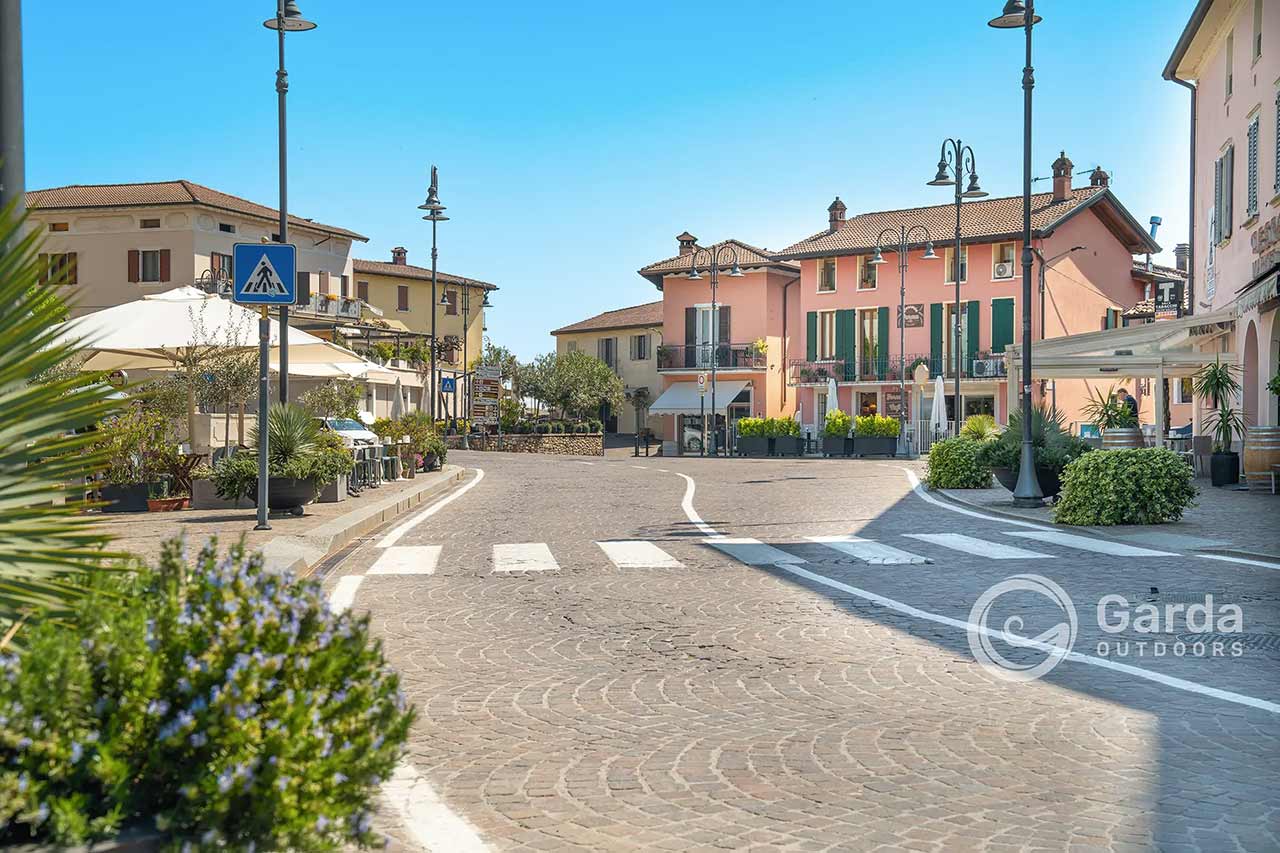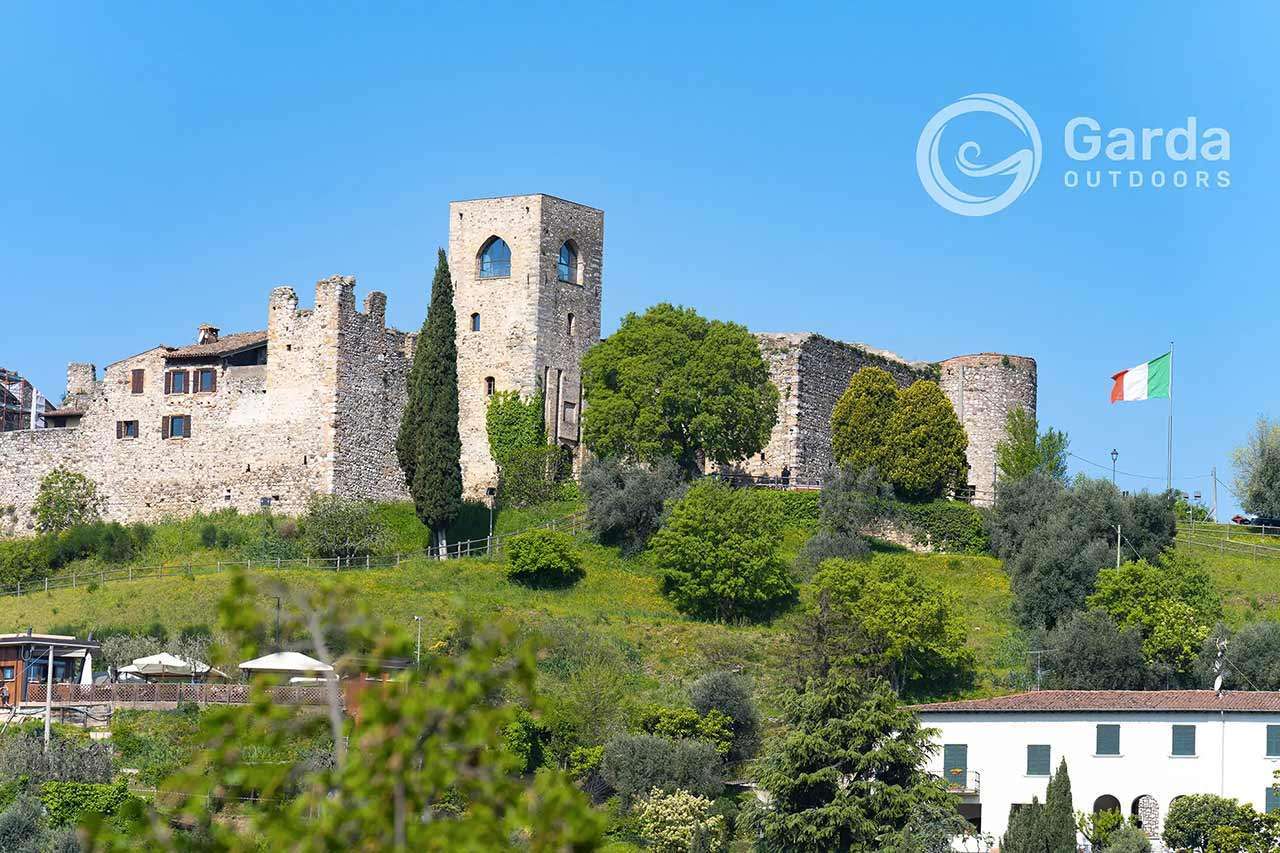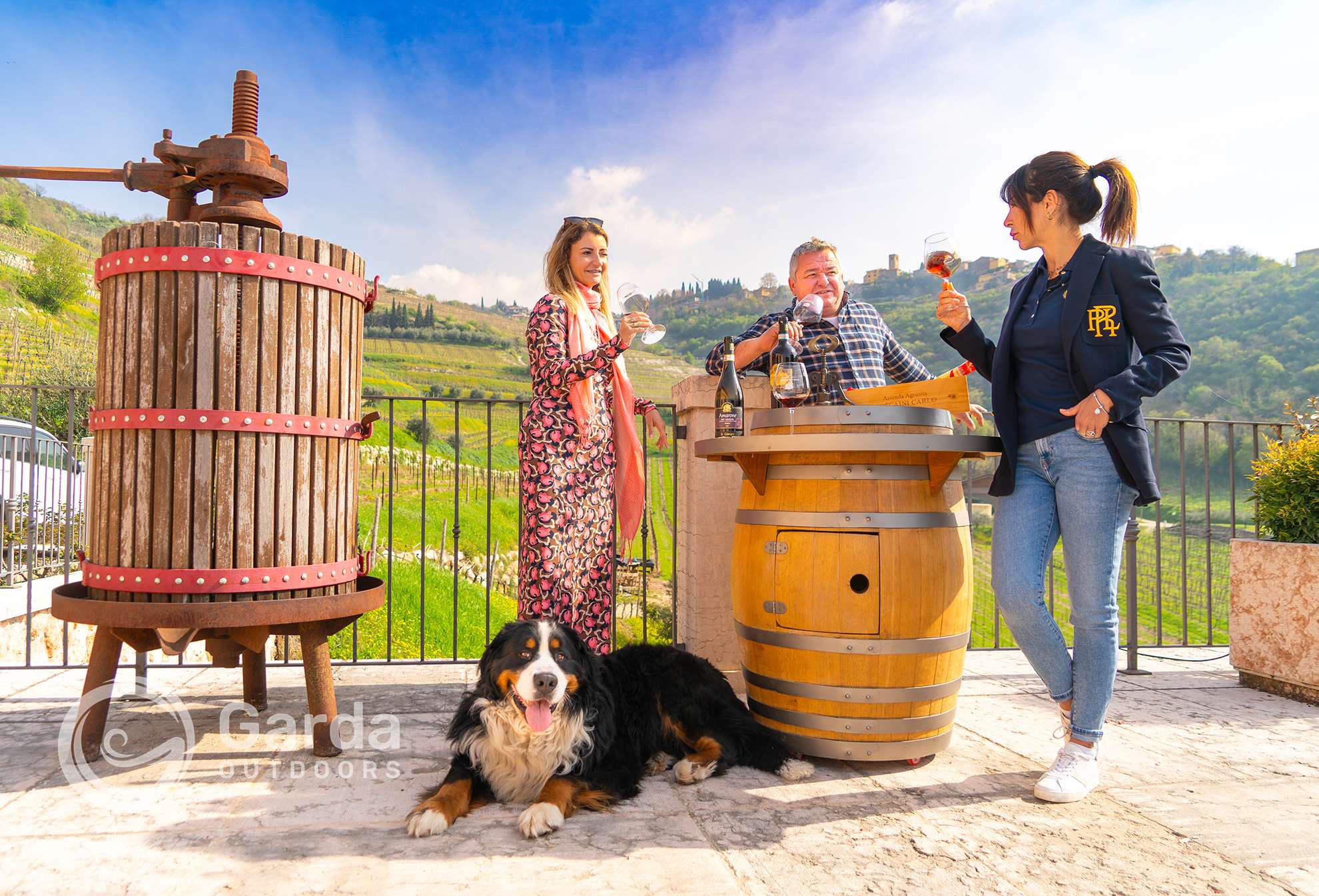Verona for many is synonymous with the love story of Romeo and Juliet: Shakespeare’s drama that has certainly built one of the identities of this splendid Venetian city. But not the only one.
Here we also find the Arena, which attracts opera enthusiasts from all over the world, and an intertwining of historic alleys, squares and buildings embraced by the bend of the Adige river, which make Verona a unique city in the world.
Let’s find out together what to do, see and eat in Verona, to bring home a piece of this wonderful city!
What to see in a day trip in Verona
Piazza Brà and the Arena.
Piazza Brà is the main square of Verona. The toponym derives from the term “braida”, which in turn derives from the Lombard breit, or “wide”; it is in fact the largest square in the city. You can observe Palazzo Barbieri, seat of the Municipality, the imposing Gran Guardia, the Listòn, along which you can sit and observe passers-by from a table of the numerous bars and restaurants and, last but not least, the ancient Roman amphitheater: the Arena . During the summer months it hosts the famous Arena opera festival, whose seasons have been held continuously since 1913, while the rest of the year is a stage for many international singers and musicians. For info and tickets click here.
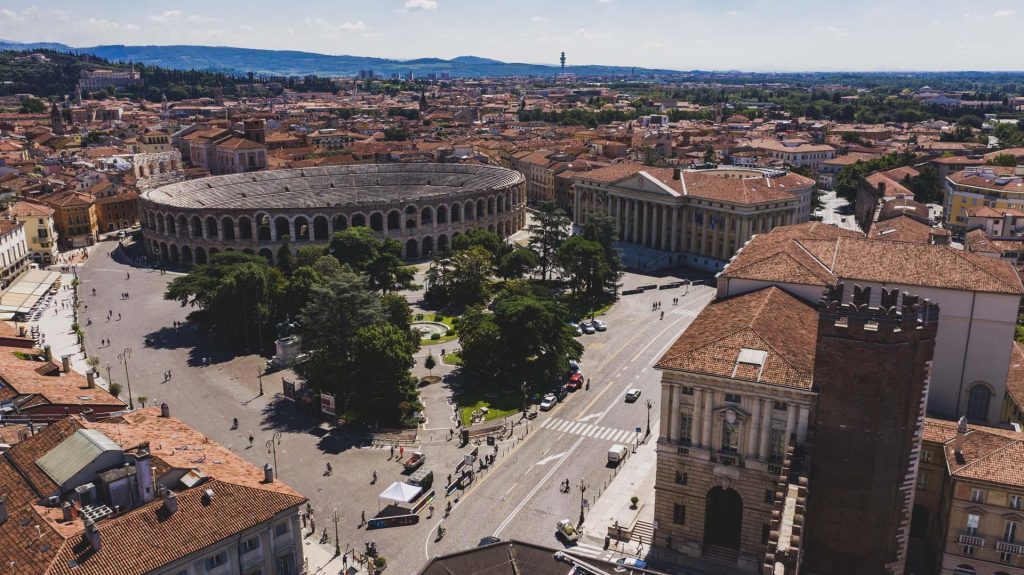
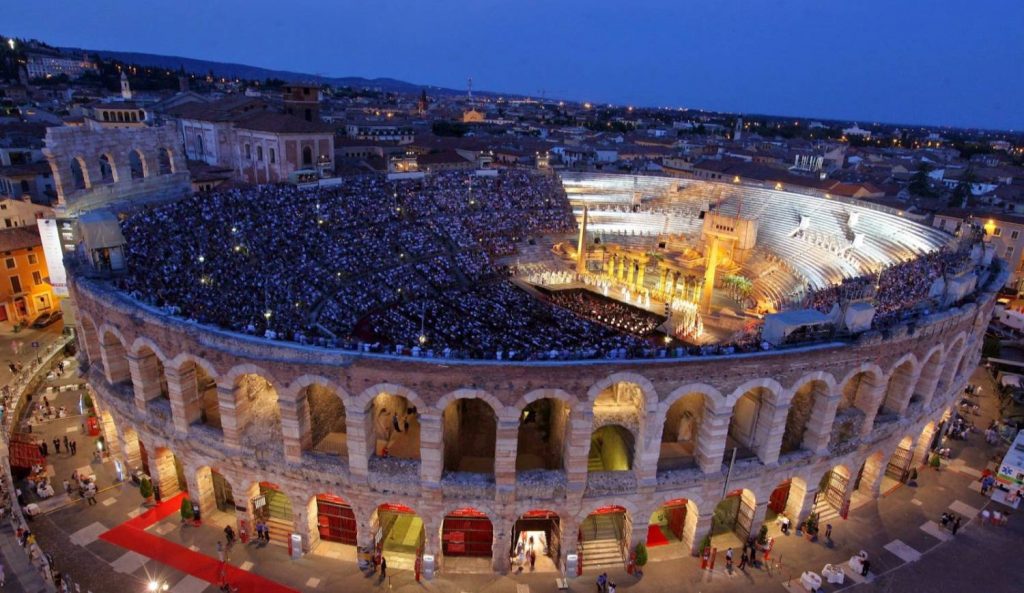
Castelvecchio and Arco dei Gavi.
Castelvecchio, originally called the castle of San Martino in Aquaro, is a medieval fort located in the historic center of Verona currently used as the seat of the homonymous civic museum; it is the most important military monument of the Scala family. The castle as a whole is dominated by the high bulk of the keep that stands on the western front, on the banks of the Adige, near the beautiful fortified bridge, which we recommend you to walk and discover! For info and museum opening hours click here.
Built by the Romans at the beginning of the first century after Christ, the beautiful Arco dei Gavi is a rare example of a celebratory arch dedicated to a family of private citizens, the gens Gavia. An elegant four-faced arch with an elongated rectangular plan, made using heavy blocks of white stone arranged in rows, which is located right next to Castelvecchio.
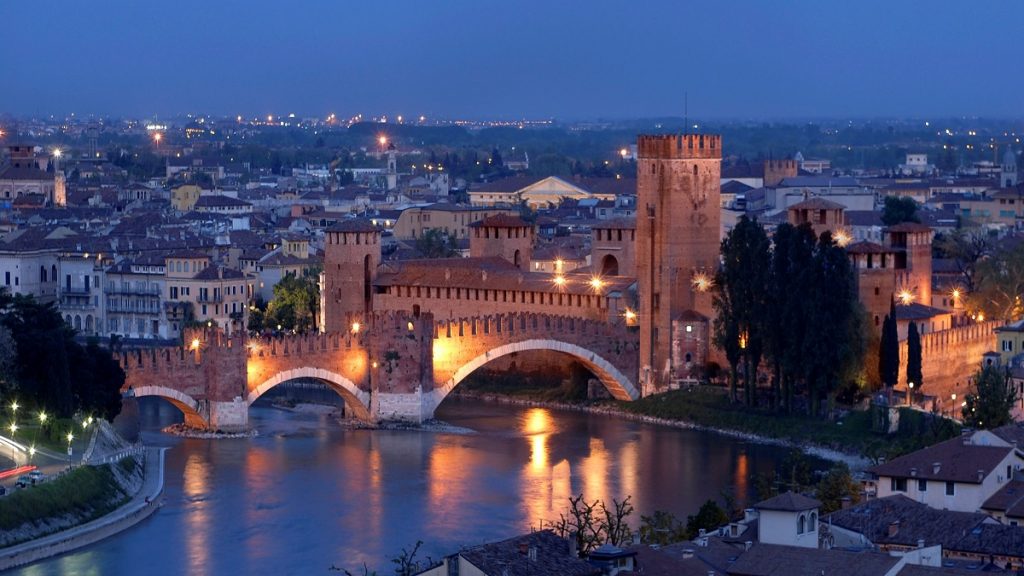
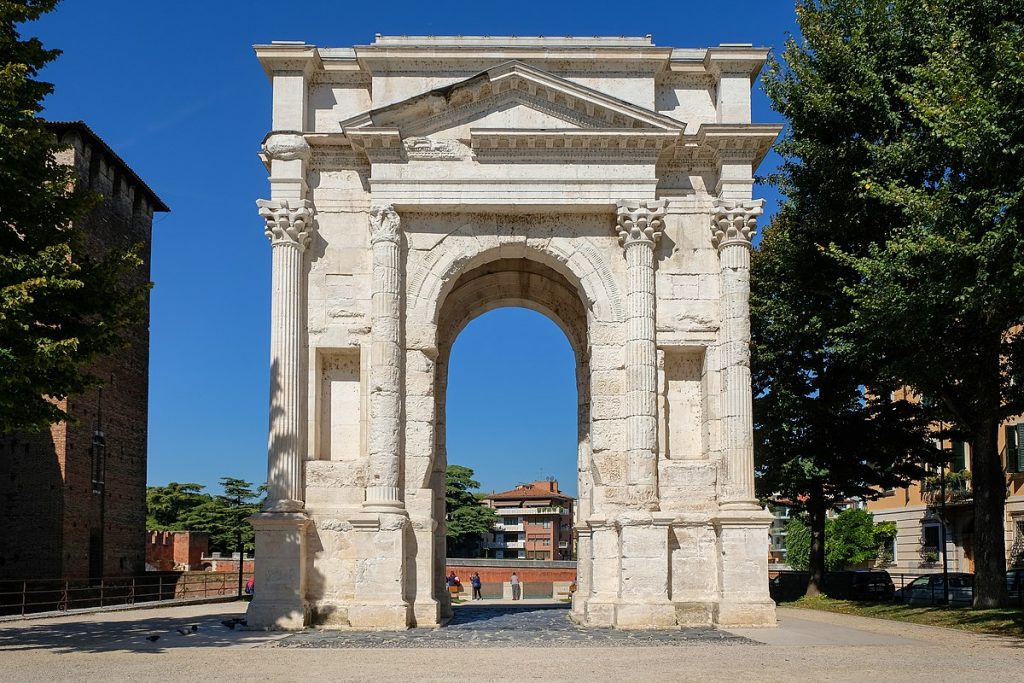
Piazza Erbe and Basilica of Santa Anastasia.
Piazza delle Erbe (or simply Piazza Erbe) is the oldest square in Verona, and rises above the area of the Roman Forum. In Roman times it was the fulcrum of political and economic life; over time, the Roman buildings have given way to medieval ones and now it is the center of the Veronese nightlife among beautiful crowded clubs at aperitif times and historic cafes. However, it has not lost its soul and during the day it hosts the fruit and vegetable market as well as souvenirs and clothing. The oldest monument in the square is the fountain surmounted by the statue called Madonna Verona from the Roman era, dated 1380, with medieval additions. Another historical monument is the capital, called Tribuna. It is dated to around the thirteenth century, a period in which it was used for various ceremonies: in particular under it sat the podestà for the ceremony of the installation and there the praetors took the oath.
4 historic streets start from Piazza Erbe: Via Cappello (leading to Juliet’s house – see below), Via Mazzini (the shopping street, one of the oldest and most prestigious pedestrian streets in Europe, which connects Piazza Brà – curiosity: you will notice that the central drainage channel of the pavement along the whole street does not follow a precise straight line. This is because it follows in parallel the trend of the gutters of the various houses that overlook it), Corso Porta Borsàri (another renowned shopping street that takes the name from Porta Borsàri, one of the ancient Roman entrance doors to the city, used in the Middle Ages by those in charge of collecting the tax for the bishop on goods in transit), and Corso Santa Anastasia (the ancient street of antiques) which leads to the beautiful Basilica of Santa Anastasia.
The Basilica of Santa Anastasia develops in three large naves supported by 12 imposing columns of red Verona marble. On the transept there are 5 chapels. On the left side opens the ancient oratory of the convent, Giusti Chapel. For more info and visiting hours click here.
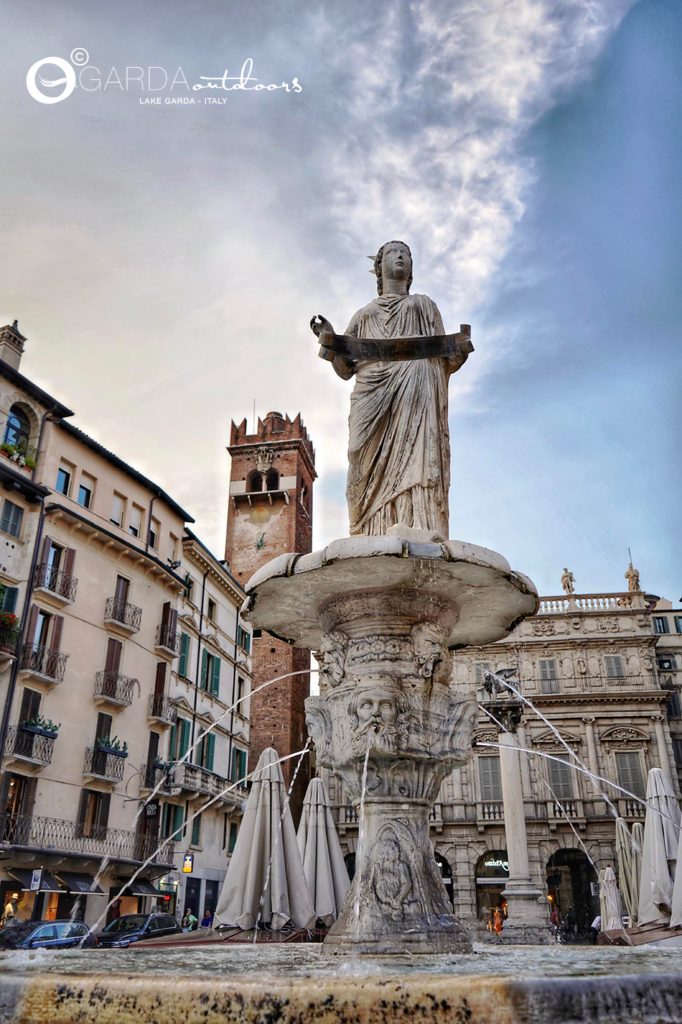
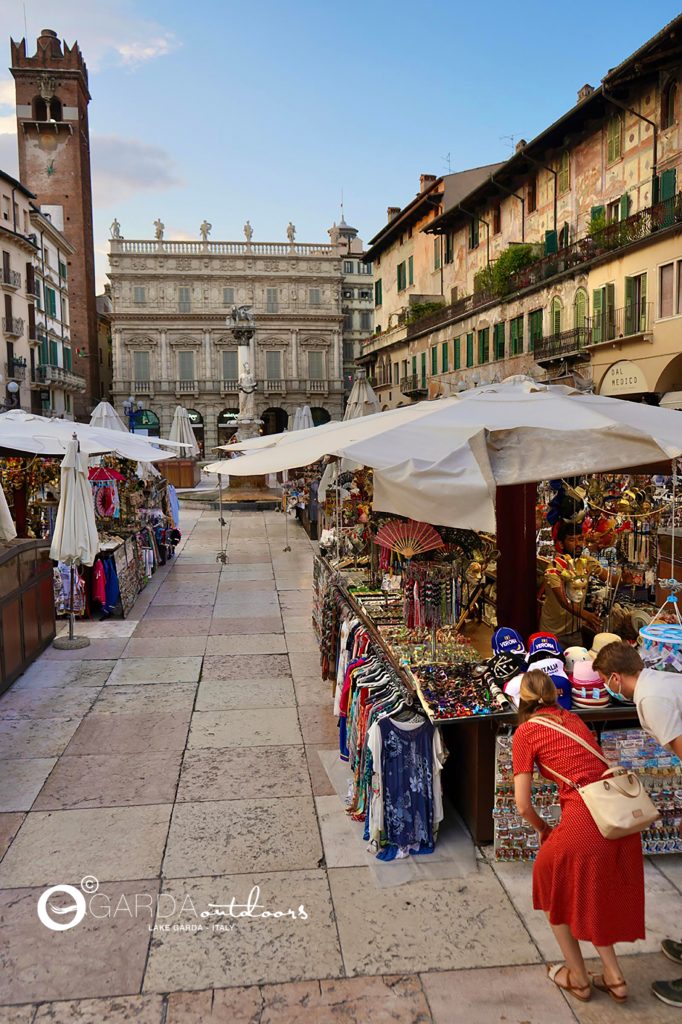
Juliet’s house and balcony.
Juliet’s house is a medieval palace in Verona, located in via Cappello, a short distance from the central Piazza delle Erbe. It is the destination of excellence for lovers from all over the world!
The tragedy of Romeo and Juliet found confirmation in Verona and fantasy mixed legend and reality, so much so that various places were recognized where the story narrated by Shakespeare would take place. Find all the curiosities and information by clicking here.
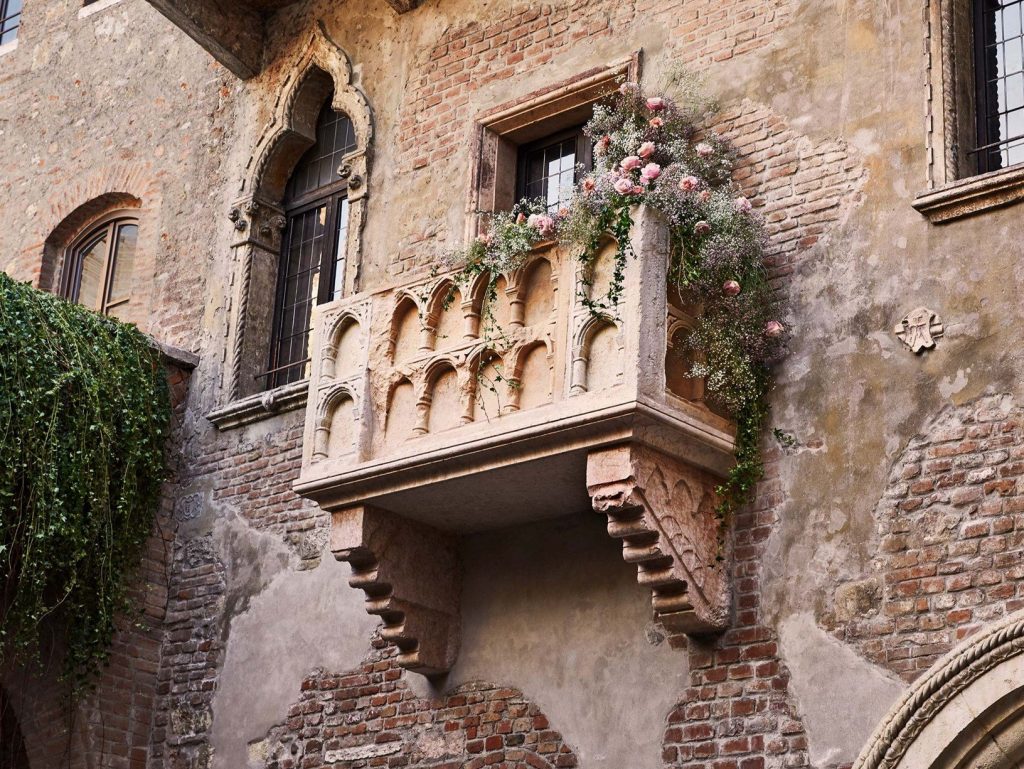
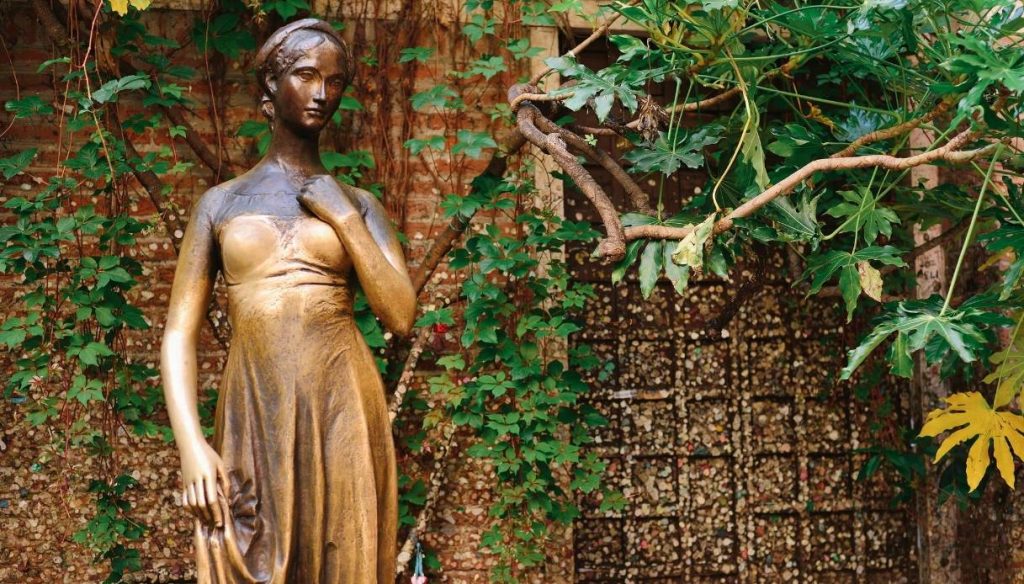
Piazza dei Signori, Palazzo della Ragione and Arche Scaligere.
Piazza dei Signori, is a beautiful square located in the historic center of Verona, adjacent to Piazza delle Erbe. It was born in the Middle Ages from the development of the Scaliger palaces, and from the very beginning assumed political, administrative and representative functions. It is also named by the Veronese as Piazza Dante, thanks to its large white marble statue positioned in the center. To reach it, you pass under the Arco della Costa. Its name derives from a whale (or perhaps ichthyosaur) rib that has been hanging under it for centuries. Just look up to the sky, then, to admire this huge bone that despite the numerous interpretations continues to remain a mystery. What is known is that the coast has been in its position since at least the 17th century and there are various legends about it: according to some it is a relic brought from the holy land by crusaders of Verona, while according to others it could be a primitive form of advertising. for the ancient pharmacy that is still under it now. Still others believe that it could be a fossil, a bone of some monster placed in the heart of Verona to protect the city.
From Piazza dei Signori you reach the Palazzo della Ragione, a majestic quadrangular building with an internal courtyard; a “domus communis” built in the 12th century to accommodate the new magistrates of the municipality, incorporating various pre-existing buildings, and equipped with four mighty defensive corner towers.
Furthermore, we arrive at the Arche Scaligere, a monumental funerary complex in the Gothic style of the Scaligeri family destined to contain the arks (tombs) of the most illustrious representatives of the family. The tombs are enclosed by a wrought iron fence in which the motif of the staircase, symbol of the family, recurs, while the sarcophagi are located on the ground or on raised floors.
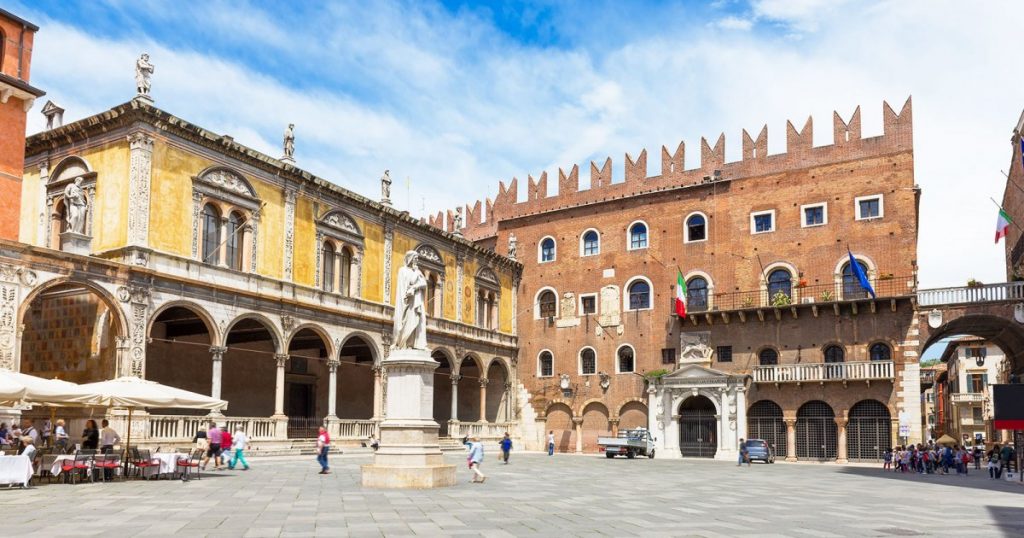
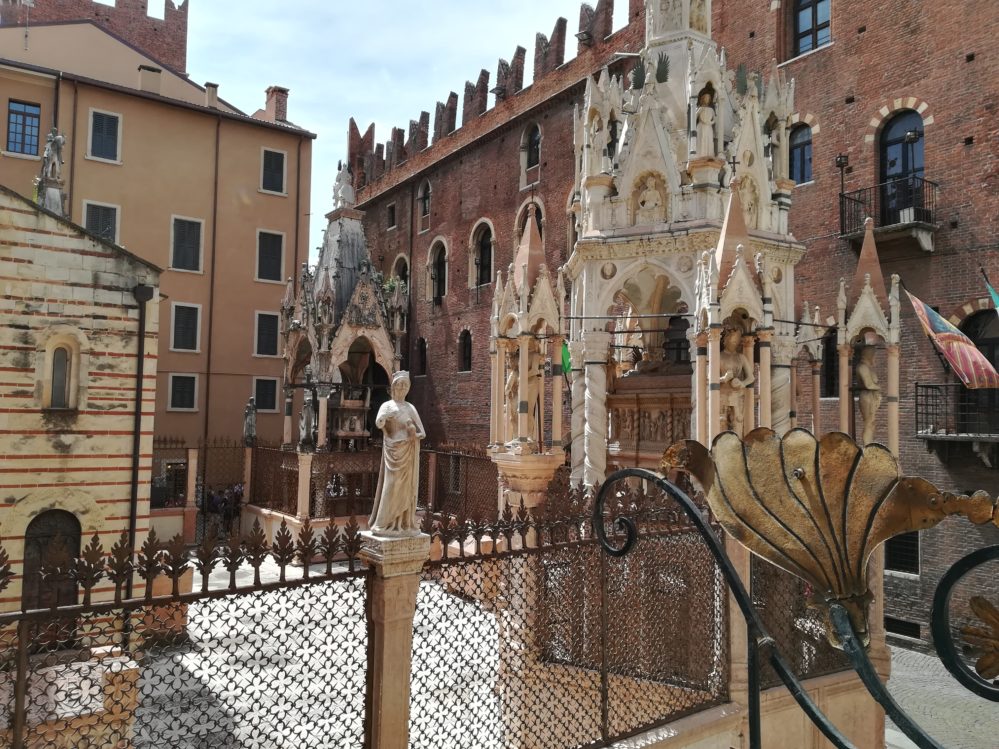
Sottoriva, Ponte Pietra and the Cathedral.
Sottoriva is one of the most evocative streets of the historic center and the most characteristic of those that still have the appearance of ancient Verona. Via Sottoriva is a jewel of the city, from which you can enjoy the splendid view of Castel San Pietro, the Scaliger walls, the Adige with its bridges. The street is flanked on one side, for its entire length, by a low and gloomy portico: here is a curious image of the Madonna holding baby Jesus in her arms, and a Renaissance door with all the characteristics of this style. , as well as numerous typical restaurants, taverns and shops. Curiosity: in 1797 the progressive numbering of all the houses in Verona that existed at that time began in Sottoriva, when Napoleon’s French introduced the “official toponymy” in the city for the first time.
Along Via Sottoriva towards Piazzetta Brà Molinari you will take the lively Via Ponte Pietra which will take you to cross the Adige river through the oldest bridge in the city, dating back to Roman times: Ponte Pietra. You will enjoy a postcard view! Curiosity: when you pass under the arch at the entrance to the bridge you will notice that the stones on the sides are marked and worn. It is said that these are the furrows left by the ropes to help the boats against the current at the exact point where the river forms some rapid.
Nearby is also the beautiful Cathedral of Verona whose official name is the Cathedral of Santa Maria Assunta but also known as the Cathedral of Santa Maria Matricolare, from the name of the ancient early Christian church, it is the main place of Catholic worship in the city. It is part of an articulated architectural complex, which also includes the Palazzo del Vescovado, the cloister of the Canons, the chapter library, the baptistery of San Giovanni in Fonte and the church of Sant’Elena, the latter two connected to the cathedral via the portico of Santa Maria Matricolare.
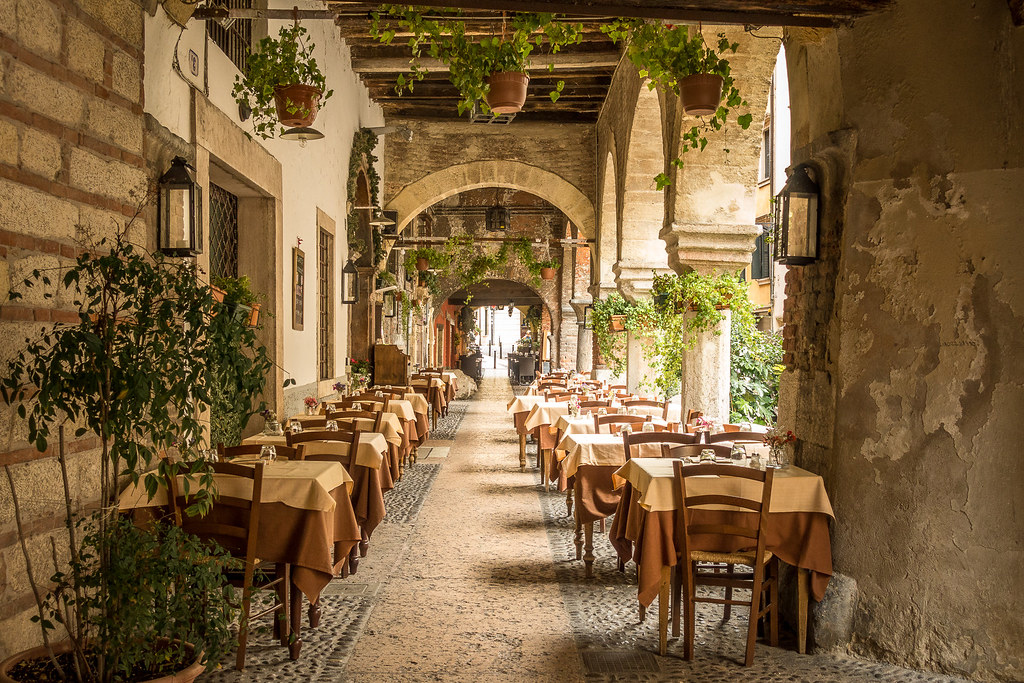
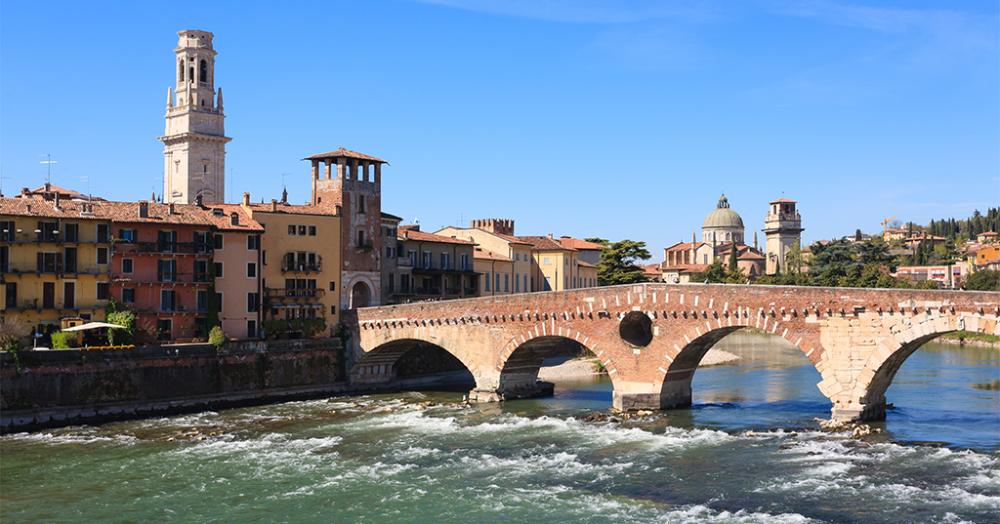
Le Torricelle, Castel San Pietro and the Roman Theater.
The Torricelle are the gentle hills that embrace Verona. To enjoy the most beautiful view of the city, you have to climb up to Castel San Pietro (a military building from the mid-1800s) from characteristic stairways that start near the pedestrian crossing of Ponte Pietra or with the more comfortable funicular.
There is also the ancient Roman Theater, built in the first century BC, which is also used today, like the Arena, for shows and concerts in the summer.
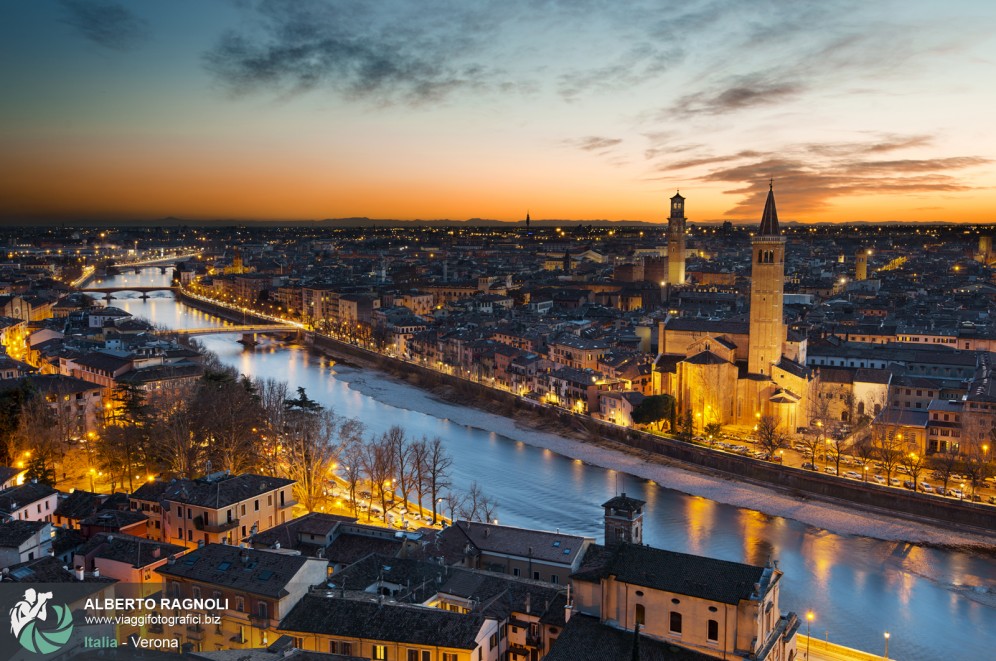
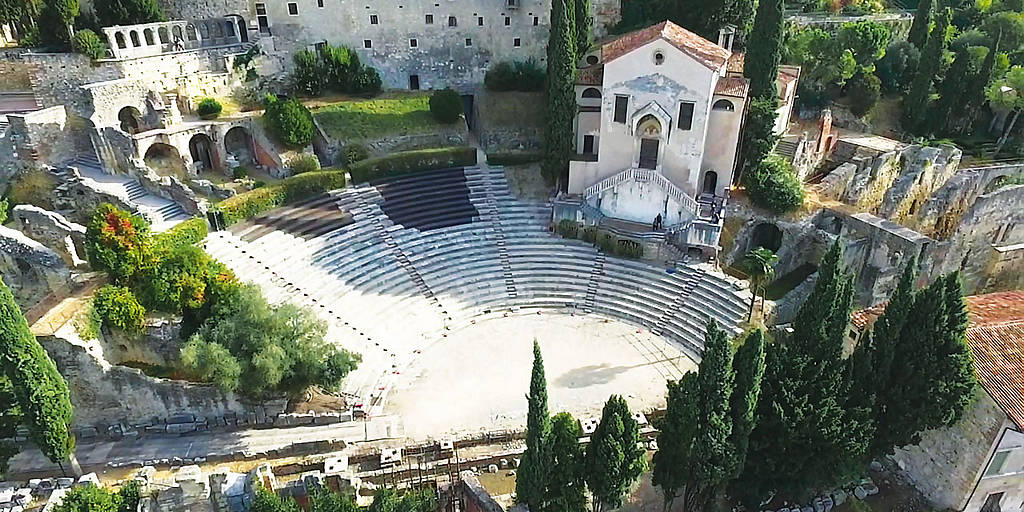
Giusti Garden.
Between the university area and the Roman Theater, exactly in the street of the same name, stands the wonderful Giusti Garden, which in the past was visited and celebrated by personalities such as Goethe, Mozart and Cosimo de ‘Medici. Built in the second half of the 1400s on the back of the city palace built by the Giusti, a family from Florence, this garden perfectly recreates the Italian Renaissance style.
In the lower part there are box hedges, a labyrinth, cypresses and mythological statues, while in the upper part the garden becomes a wood with rare essences, rocks and artificial caves, and along paths it climbs the hill from which you can enjoy a secret view of the Scaliger city. For info and visits click here.
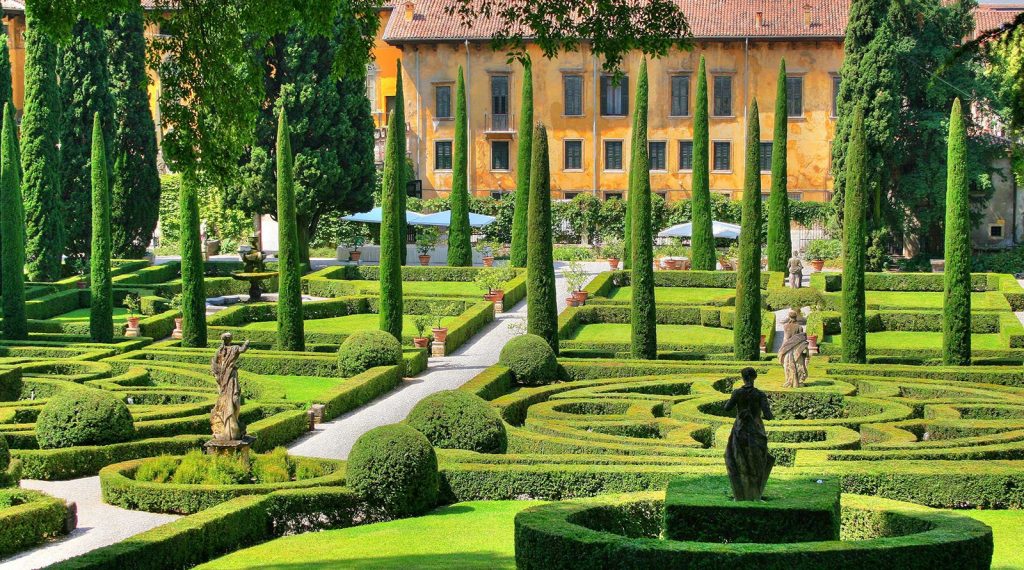
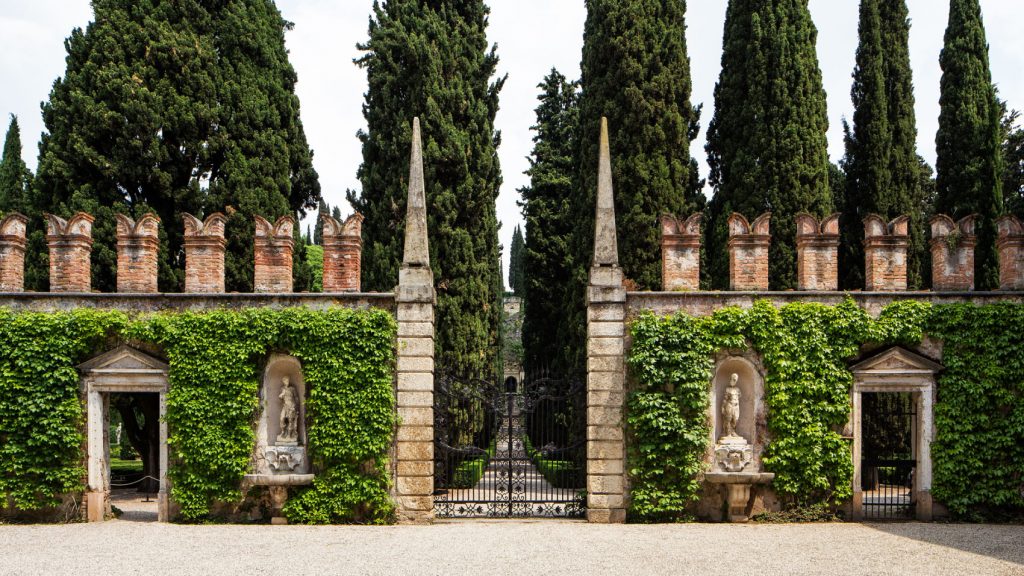
Basilica of San Zeno Maggiore and Convent of San Bernardino.
Legend has it that during the flooding of the Adige in 589, the water blocked the threshold of this church, built on the burial place of Bishop Zeno: the Basilica of San Zeno Maggiore. San Zeno, of African origin, was the eighth bishop of Verona (around 362-380) and converted the city to Christianity. This Basilica is one of the greatest examples of Romanesque architecture in Italy and its current appearance seems to date back to the 12th century. In addition to guarding the body of the Saint, the Church is rich in sculptures and paintings from the 12th to the 16th century, among these particular attention goes to the Pala di San Zeno by Andrea Mantegna, the first example of “sacred conversation” with the Madonna in the center with the Child. From the left we recognize St. Peter with the keys, St. Paul with the sword, St. John the Evangelist with the pink robe, St. Zeno in bishop’s robes, St. Benedict with the monastic habit, St. Lawrence with the grill, St. Gregory the Great dressed as pope and St. John the Baptist with the typical hermit’s robe in the desert. It is understood that this is a conversation because the direction and the gestures give the impression that the saints are talking to each other. For info and visits click here.
A few minutes from Piazza San Zeno, there is a Franciscan convent surrounded by high walls that hide the view from passers-by. Built in the mid-fifteenth century, the Convent of San Bernardino holds a precious treasure that not even the Veronese know. This is the Sala Morone, one of the most important Renaissance works in Verona, decorated with paintings on all the walls and perfectly preserved. The room was frescoed from 1494 to 1503 by Domenico and Francesco Morone (father and son) and at the time it was the library of the Franciscan convent, financed by the noble Lionello Sagramoso, for this reason the room is also called the Sagramoso Library. For info and visiting hours click here.
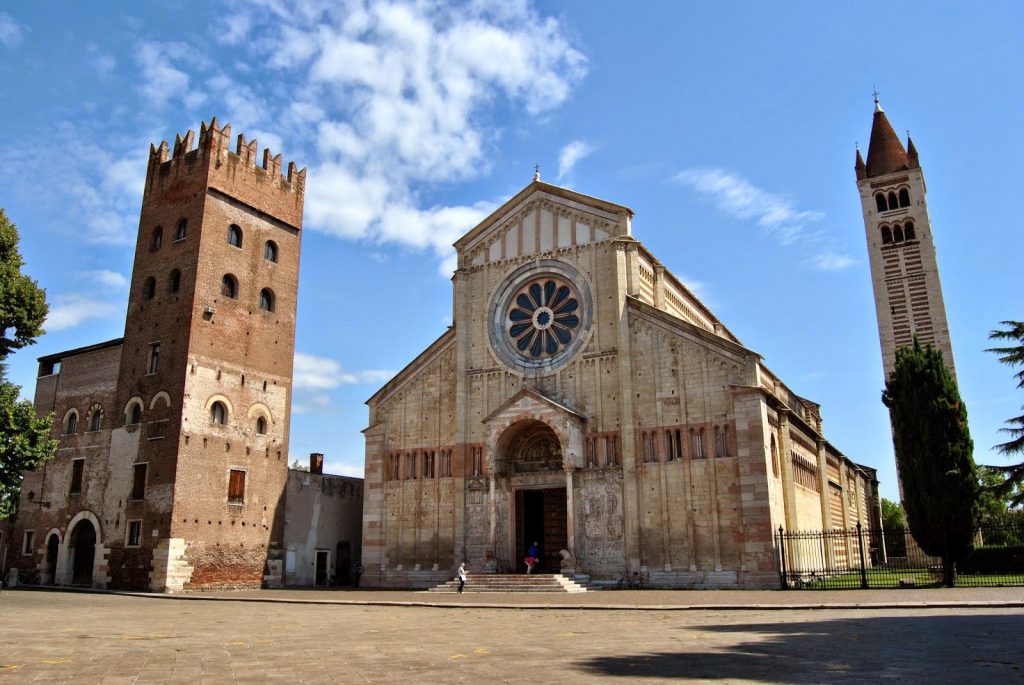
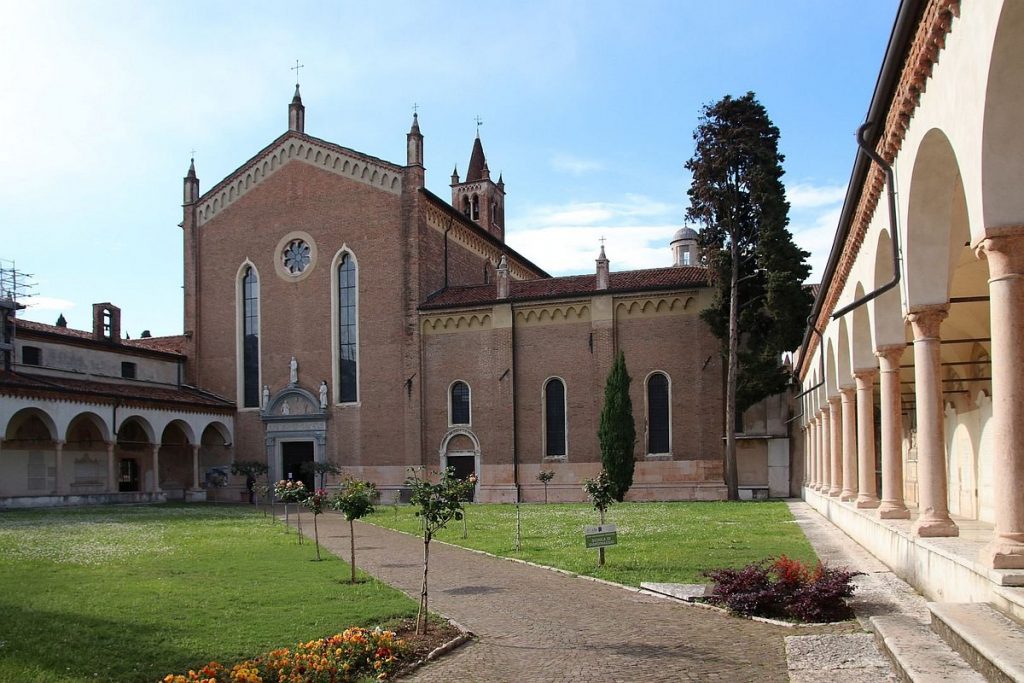
The fascinating, romantic and lesser known churches of Verona.
The Church of San Fermo (stradone San Fermo near Ponte Navi) is a refined example of the Gothic style spread in Italy by the Order of the Friars Minor and constitutes a singular case for the references to French architecture, especially in the upper part of the building, with spiers and pinnacles unusual in the city scenery. Inside, as in a casket, the lower Benedictine church is kept, a jewel of local Romanesque architecture.
The early Christian Church of San Giovanni in Foro (Corso Porta Borsari) is a small jewel in the heart of the city.
The Church of San Lorenzo (Corso Cavour) is a Burgundian-inspired Romanesque basilica, built in the 12th century covering a previous early Christian building dating back to the 5th century. It is accessed from the road through an elegant marble portal (Gothic in the arch and capitals, but typically Renaissance in the jambs) surmounted by the statue of San Lorenzo holding a grill in his hand.
The Church of the Holy Apostles (in a small tree-lined square in the middle of Corso Cavour). Crossing the sacristy you enter the underground sacellum of Sante Teuteria and Tosca, one of the oldest places of worship in Veneto, built in the fifth century on top of a pre-existing Roman cemetery.
The Church of San Giovanni in Valle (Via San Giovanni in Valle) is a Romanesque church built in the Lombard period (VII-VIII century). The church, the cloister and the collegiate church (12th century) stand next to the residences of the kings Theodoric (6th century) and Berengario (9th century), of which the wall enclosure remains today. The chromatic scansion of brick, pebbles and soft stone is typical. Inside there are 12th and 14th century frescoes from the school of Martino and Altichiero.
The Church of Santa Maria in Organo (Via Santa Maria in Organo), a Benedictine abbey since the 7th-8th century, was already the oldest Veronese monastery in the Lombard period, while the church has come down to us in its prevailing 15th-century form. Absolutely not to be missed are the inlays of the sacristy cabinets, the elegant wooden choir and the lectern carved in the fifteenth century by the skilled hands of the Olivetan friar Giovanni da Verona, while in a chapel in the northern transept there is the “Muletta”, a wooden statue that represents Jesus on the mule ready to make his entry into Jerusalem (Mt 21: 1-15). The church boasts one of the oldest organs in the province, built by master Nicola degli Angeli in 1506 and renovated several times.
The Basilica of Santa Teresa of the Child Jesus (Borgo Roma district). Although it is not located in the historic center, it is worth a visit.
What to do in a day trip in Verona
The Museums of Verona.
Civic Museum of Natural History.
In the large rooms of Palazzo Pompei there are now sixteen exhibition rooms, the library, the laboratories, the collections deposits and the offices of the Museum. It houses the scientific sections dedicated to the study of minerals and rocks, paleontology and zoology. The sections of prehistory and botany are housed in the Command Building of the Austrian Arsenal in Verona. For info and timetables click here.
Nicolis Museum.
The museum tells, through hundreds of cars, motorcycles and bicycles, the evolution of the means of transport of the last two centuries. You will also find cameras, to write, musical instruments and curious and unobtainable objects. For all the info click here.
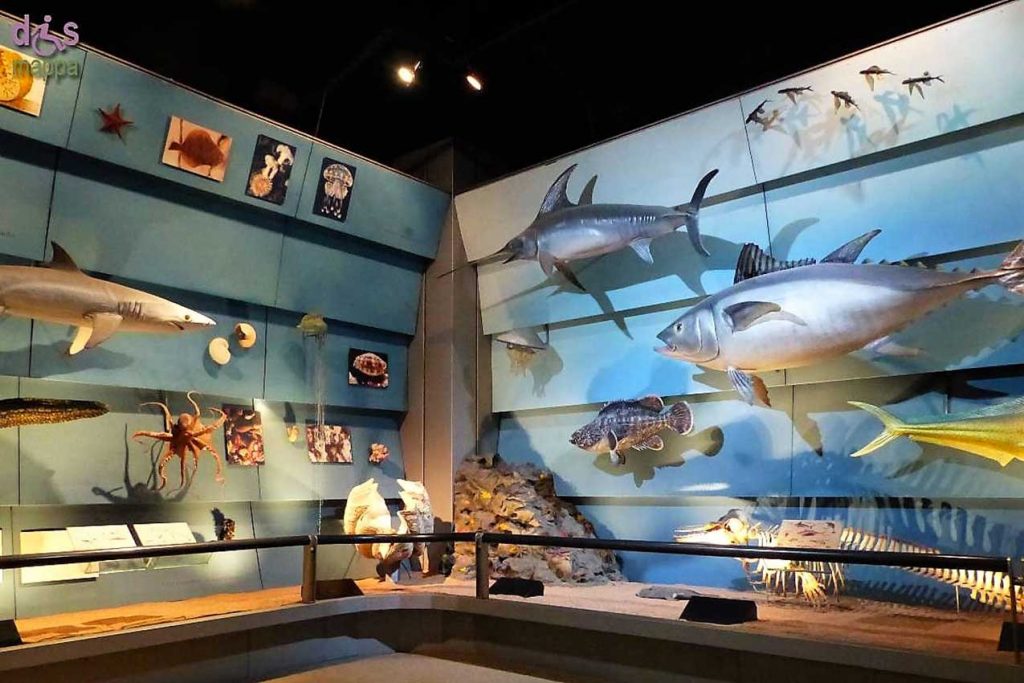
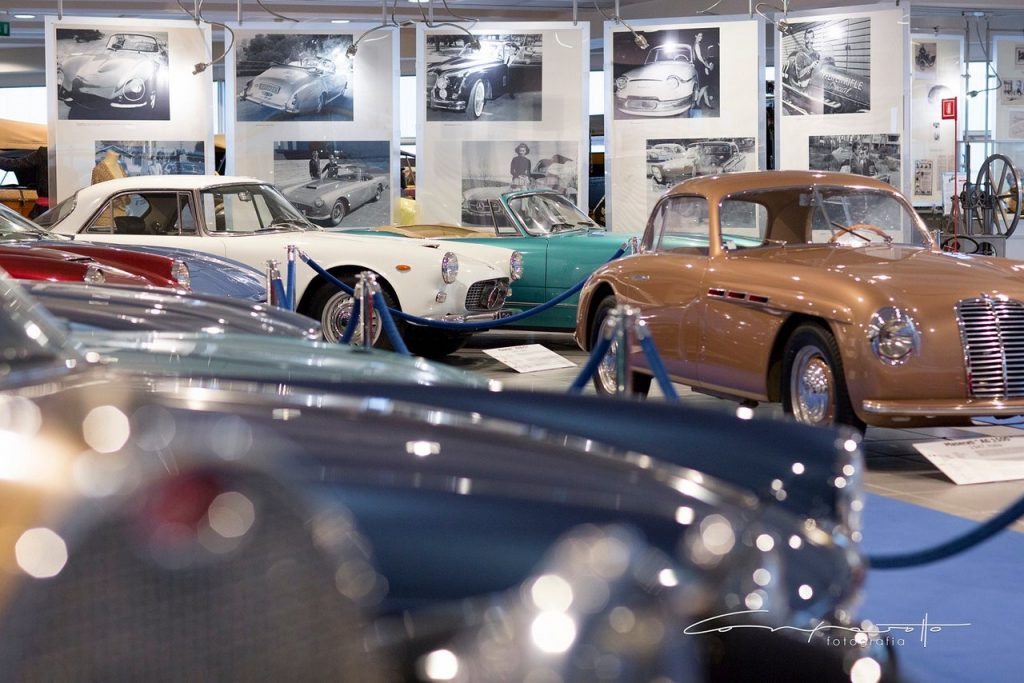
International annual events.
Verona in Love.
In February, on the occasion of Valentine’s Day, Verona experiences love in its most evocative places together with many realities of the city: theaters, museums, libraries, squares, commercial activities, restaurants that together organize a program full of events theme. All the info here.
Arena di Verona Opera Festival.
From June to September, the magic of the Arena, the largest theater under the stars in the world, is revived thanks to the artistic and technical ensembles of the Arena Foundation with international directors and artists in the most important and beloved titles of international opera. All the info here.
Tocatì.
The Tocatì – International Street Games Festival, is an event of traditional games that takes place every year in Verona at the beginning of September. The name of the festival derives from the Venetian expression “toca a ti”, meaning it’s your turn. The event focuses on the rediscovery, enhancement and protection of traditional games that are played by small communities of players, as they are considered a fundamental part of the culture of a territory, as also recognized by UNESCO. The festival, organized since 2003, takes place in an area of 200,000 square meters of the historic center and lasts three days, during which traditional playful communities offer more than 50 games, including Italian ones and those of a country guest: every year a delegation of games from one or more countries of the world is hosted. All the info here.
Vinitaly.
Vinitaly is a very important international exhibition of wine and spirits, which has been held at the Verona fair since 1967, on an annual basis. The city center is also transformed into a series of events dedicated to wine lovers. All the info here.
Fieracavalli.
This important fair in the world of horses and horse riding is held in November. All the info here.
Exhibition of Nativity Scenes – Christmas Markets and Comet Star.
From November to January Verona hosts more than 400 nativity scenes from all over the world. A spectacular exhibition for young and old! For info and tickets click here. Also scattered around the city you will find the beautiful Christmas markets and the Arena is dressed in a spectacular Comet Star that starts from its center and shines in Piazza Brà.
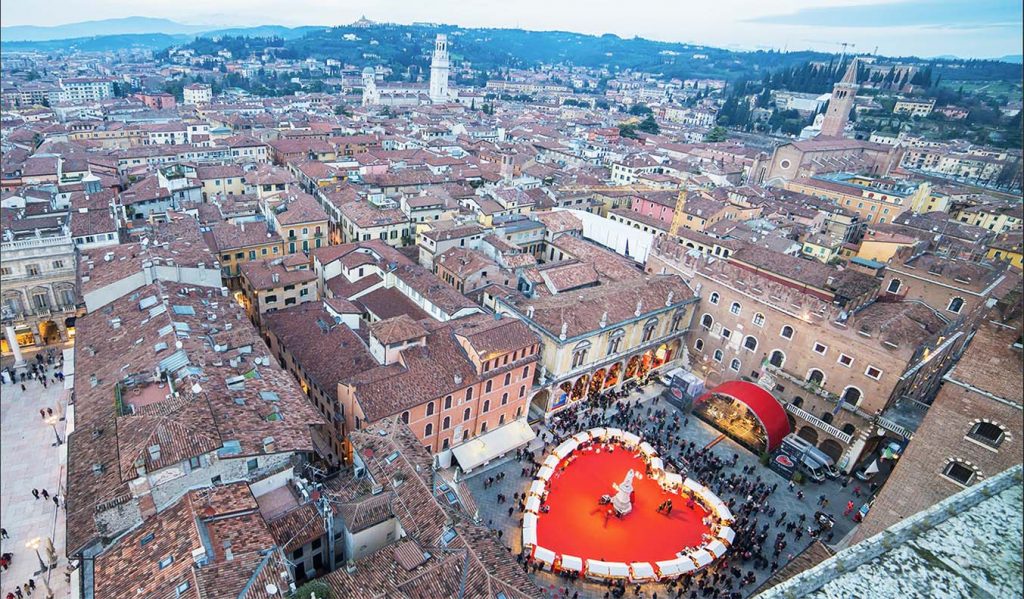
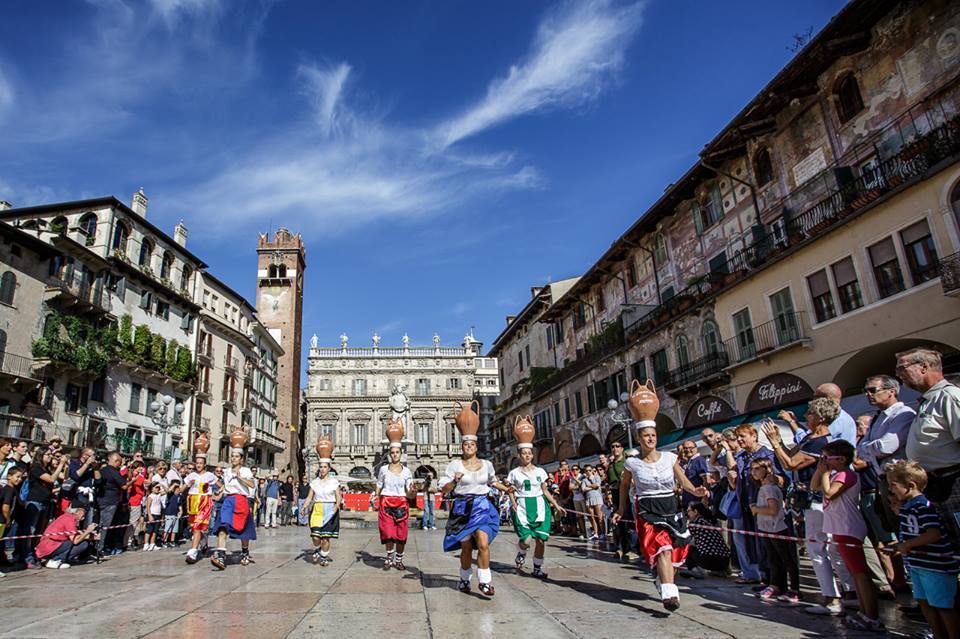
What to eat in Verona
Veronese food and wine specialties.
Those who visit the city of Verona cannot leave without having tasted one of the most particular sauces of the entire Italian territory: the Pearà. Prepared with dry bread, bone marrow, meat broth and a nice grind of pepper, it serves as an accompaniment to boiled meat and cotechino. A real delicacy, seeing is believing!
Then you can taste the Pastissada de Caval (a very soft stew made with horse meat usually served together with polenta), the risotto with Tastasal (a tasty minced pork), the bigoli with sardines, pasta and fasoi (pasta with the beans), the Renga di Parona, the wines of Valpolicella including the renowned Amarone, the wines of Custoza and Bardolino.
Let’s not forget that the very famous Pandoro, one of the typical Christmas sweets, was born in Verona, together with the Mandorlato di Cologna Veneta.

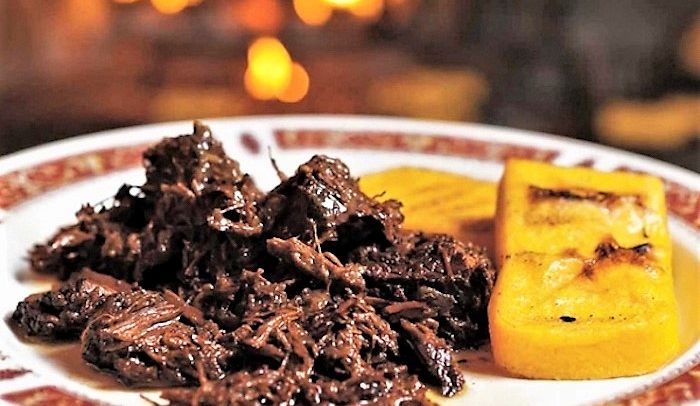
What to see around Verona.
Verona offers many “out of town” trips. We recommend a super picnic in Valpolicella, to discover its churches, cellars and hidden gems. You cannot miss an excursion in Lessinia, between archeology and uncontaminated nature of rare beauty. And then there is our beloved Lake Garda: Malcesine, Cassone, Torri del Benaco, Lazise, Bardolino…
From spring to autumn you can also spend a beautiful day inside the Sigurtà Garden Park.
Hotels – Restaurants – Experience in Verona.
Where to stay in Verona
In Verona and on Lake Garda there are many structures in which to stay, from small and well-kept B&Bs to resorts with wellness centers and beauty services. In the section dedicated to where to sleep, you will find all the information to find the most suitable accommodation for you.
Where to eat in Verona
The same goes for where to eat, at this link you will find our selection of restaurants. Remembering that Verona and all of Lake Garda offer several starred restaurants and the quality of the culinary offer is very high.
There are many activities and experiences you can do between Verona and Lake Garda, so we recommend that you visit the section dedicated to experiences in our magazine by clicking here.
It’s hard to summarize my hometown in one article; such beauty is difficult to condense. Verona is one of the Italian cities with an excellent relationship between internationality and livability. It is capable of giving a lot of intimacy, together with events of great depth and sociality. Its panorama offers lake, mountains and in one hour… there’s also the sea!
See you next time dear Outdoors!
Silvia Turazza – Garda Outdoors editorial staff
-all the photos included, except those of Piazza delle Erbe, were taken from the web-
